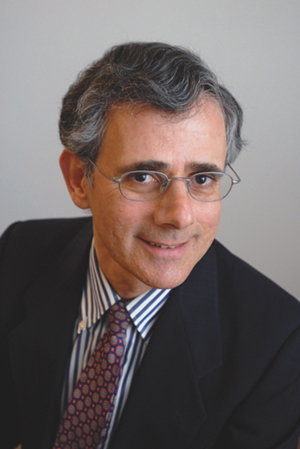
Medical negligence litigation involves significant stress and expense, especially since reputations are on the line as is just compensation for the injured.
 That’s why it’s so discouraging to see lawyers playing games, driving up costs, and delaying just dispositions in medical negligence actions. Making the situation worse is the fact that public taxes fund such tactics. Regrettably, that’s what transpired in Ornstein v. Starr.
That’s why it’s so discouraging to see lawyers playing games, driving up costs, and delaying just dispositions in medical negligence actions. Making the situation worse is the fact that public taxes fund such tactics. Regrettably, that’s what transpired in Ornstein v. Starr.
The plaintiff, Sophie Ornstein, was 20 months old when she underwent surgery to remedy a painful condition known as trigger finger on the baby finger of her right hand.
But there was one problem with the surgery: the surgeon conducted the operation on the right thumb rather than the baby finger.
According to the statement of claim, this error caused scarring and internal damage to the thumb. It also delayed and compromised the development of Sophie’s motor skills and led to additional surgery on the baby finger, as well as pain and suffering.
A clearer case of negligence would be difficult to imagine. But both defendants, the surgeon and the hospital, denied liability and damages despite the fact that the surgical error was obvious from the content of the day surgery report.
Examinations for discovery were to take place on Jan. 24, 2011. Ten days prior to that, the surgeon admitted to having breached the standard of care but made no admissions about damages save that the mistake required additional surgery to remedy the trigger finger.
Indeed, both the hospital and the surgeon continued to deny that the defendants’ conduct had caused or contributed to any of the damages asserted.
Counsel for the hospital then took the position that it would produce no witness to attend examinations for discovery on its behalf. In counsel’s view, the admission by the surgeon obviated the plaintiff’s need to examine a representative of the hospital.
Counsel for the surgeon used the same tactic but nonetheless did produce her client for discovery. That discovery didn’t go well. The surgeon’s counsel obstructed the discovery to the point that the plaintiff’s lawyer terminated the proceedings after 22 questions.
There were objections to even the most introductory and relevant questions such as when he had first met Sophie, whether he had examined her hands at that time, and whether he had made any observation of the condition of her fingers.
Here’s what Superior Court Master Donald Short had to say about these tactics: “In a case where the contemporaneous surgical note candidly and succinctly recognizes that the intended surgery was not performed, to deny liability for four years and then force the plaintiff to incur the costs of preparing for and conducting aborted discoveries and then to incur the costs of this motion would suggest an intentional strategy of delay.
Plaintiffs don’t have the war chest and endurance of professional defendants.”
Short ordered the hospital to produce a representative to attend an examination for discovery, the surgeon to reappear, and fixed costs at $9,000 on a substantial indemnity basis.
In making this order, Short reminded defendants’ counsel that “if patients are proven to have been harmed as a result of negligent medical care (or it is admitted that this is the case), fairness must dictate that timely arrangements be made to compensate those patients in an appropriate and timely manner.
I cannot imagine that any defendant would attempt to rag the puck in an attempt to exhaust the injured party’s finances or spirit.”
Yet isn’t that precisely what took place? What other explanation is there for the tactics that attempted to place barriers to the plaintiffs’ ability to effectively and efficiently pursue the litigation?
What makes this even worse is the fact that these silly games led to the waste of taxpayers’ dollars. I don’t mean the waste of resources in tying up court time to resolve this dispute. Rather, I mean the money used to fund the Canadian Medical Protective Association.
Doctors pay membership fees to the association. They vary from a modest $366 to an expensive $36,000, depending on the physician’s specialty and practice.
But the Ontario government reimburses the majority of these fees, meaning that taxpayer funds help doctors retain lawyers to defend themselves in negligence actions.
Since taxpayers are paying most of the litigation fees, shouldn’t the public have some input into how doctors spend the money? I believe it should and that’s why I’m voicing my opinion that I don’t want public tax dollars used to help defence counsel fund abusive tactics.
If taxpayer funds are subsidizing such tactics, perhaps the provincial government ought to scale back, if not eliminate, its reimbursement of those fees to the association.
Alan Shanoff was counsel to Sun Media Corp. for 16 years. He currently is a freelance writer for Sun Media and teaches media law at Humber College. His e-mail address is [email protected].